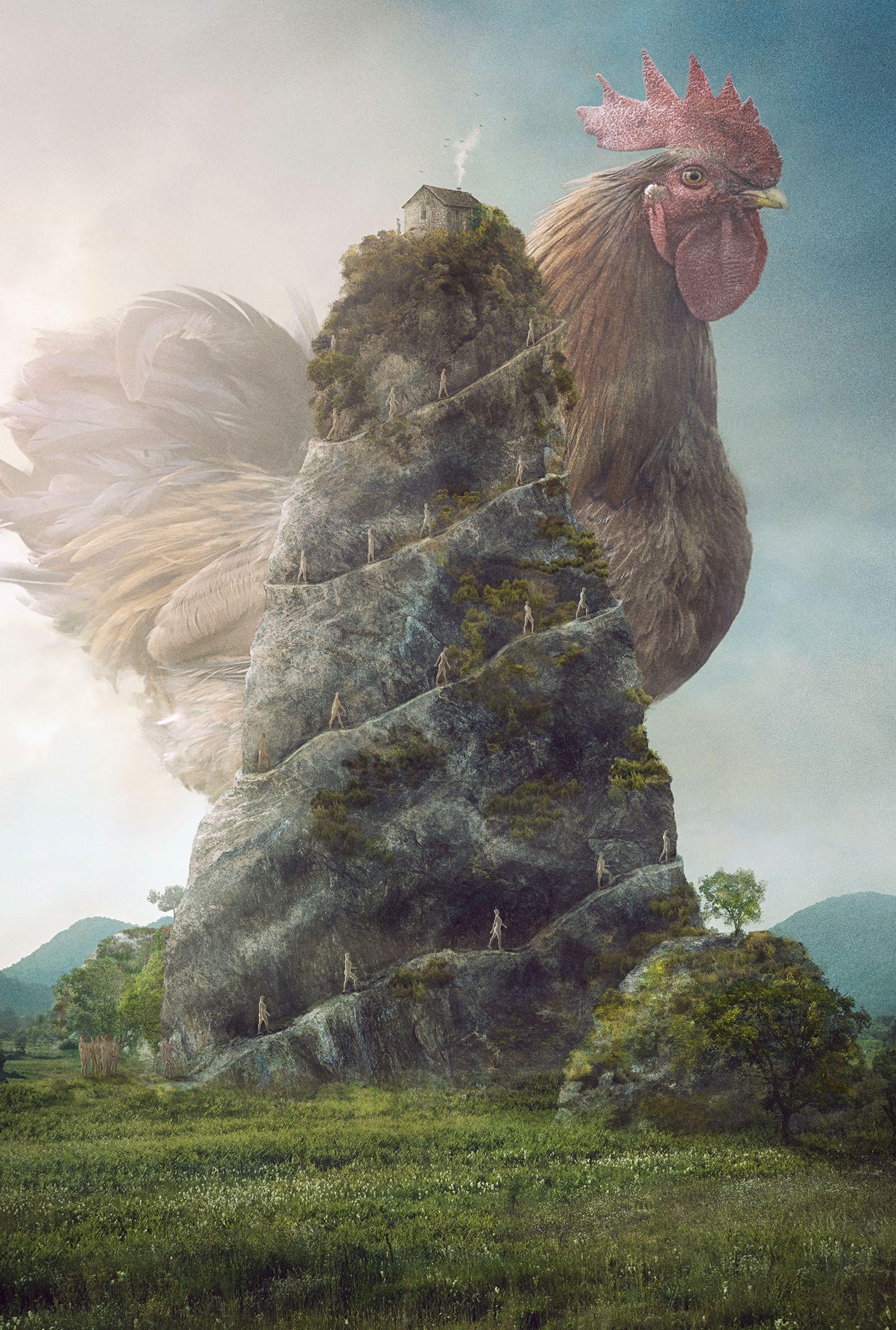
4 minute read
NIKOLINA PETOLAS
BY ANISSASTAMBOULI
Chasing Dormant Visions of the Subconscious
@nikolinapetolas / nikolinapetolas.com
Croatian artist Nikolina Petolas has mastered the artistic harmony of self-portrait photography, digital art and surrealism. Beneath the foundation of her conceptual dreamscapes runs the current of societal observation and the rapids of Petolas’ inner complexities. Pulling from influences like Jacek Yerka and Edward Gorey to name a few, Petolas’ work is ripe with psychoanalytical opportunity.
“These strange sceneries are symbolic presentations of how I perceive life, emotions, sexuality and relationships, and human behaviour,” Petolas tells INSPADES.
The path to Petolas’ current success began in the digital realm, where she mastered tools and applications as a graphic and web designer. When she took up photography, a “whole new world” of artistic opportunity emerged. “I could take what I saw in front of me through the lens of my camera, and transport it to other spheres which cannot be found in reality.”
For ten years Petolas experimented with various branches of photography including portrait, still life, landscapes and macro. Marrying her digital design skills with her photography, Petolas was able to express her ideas through imaginative, dreamlike scenes.
Grounding images with the realistic element of her original photography, fantastical scenarios and settings suspend any sense of realism. Petolas’ projects are digitally based by way of Photoshop and her Wacom tablet, yet still, she manages to achieve the remarkable effect of surrealist paintings.
Throughout Petolas’ work, common themes and symbols include dinosaur skeletons, women strangely placed in industrial settings, disproportionately large fruit and post-apocalyptic backgrounds.
“Although these worlds may seem strange and unreachable, for me they are symbolic representations of my hopes and dreams, of people around me—their urges and desires, of new revelations and repeating disappointments, and of life in general.”


One of Petolas’ striking images, “10 Years of Solitude”, presents Petolas as the prominent subject, armoured with animal ribs as a chest plate and a dinosaur skull for a helmet, it’s spine trailing from her scalp down her back. The exposed flesh of her nakedness contrasts the empty industrial setting, while her healthy, living form stands ironically protected by the bones of an extinct species.
For Petolas, bones and skeletons connote any idea or thing that once held importance in our lives, but have since “died”. “Whether it is some kind of emotion, friendship or relationship that became some distant memory, it still exists somewhere,” she explains. Like the sporadic skeletons haunting her images, the “ghosts” of our past will always maintain influence, whether in our concrete reality or the surreal planes of our subconscious.
“It is always interesting for me to see, or search for, what lies dormant under our visibly presented human behaviour,” Petolas discloses. Dedicating herself to tracking the psychological and social aspects that construct the self, Petolas also hopes to record the effect that “endless soul searching” has on the individual.
In her series Impeller, Petolas explores the dynamic between human behaviour and the progression of technology. The collection features identical women in industrial settings, inspired by Petolas’ admiration for heavy machinery, electronic music and the steampunk scene.
For Petolas, Impeller reveals our dynamic with, and dependence on, technology. She explores the “correlation and interaction between humans and machines,” and the ways in which we function in “automatic mode” as a result of our dependency on technology.
While we rely on technology for most of our contemporary conveniences, Petolas maintains that machines still can’t help us with the complicated factors that make us human: “emotion, thought, and the inability to control feelings.” As science strives to make machines more human through artificial intelligence, Petolas wonders if “humans are becoming more like machines” through our reliance on technology.
Yet while many of Petolas’ artistic scenes express specific ideas, the viewers’ interpretation colours the message with subjective projections. “I wouldn’t want to strip viewers of their personal experience with my artwork,” she clarifies.
For Petolas, “Art is a form of communication,” where viewers’ perception often differs from the artist. “This is what makes art interesting and beautiful,” she divulges, “What is seen and how it is interpreted is complemented with a missing link, and that is imagination.”
Bringing her work to life is no quick task. As the photographer and digital artist behind her projects, Petolas will spend months at a time labouring over a single piece. “I still occasionally work on some graphic projects, but I try to dedicate myself solely to artwork,” she explains.
Shooting the various elements that make up scenes can sometimes involve traversing countries, waiting for specific weather conditions, or attempting to access difficult locations. Once the photograph has been taken, Petolas then has the task of incorporating minute details into her pieces, sometimes using up to 300 layers on Photoshop while editing.
“Gathering the materials and combining them is a journey that I really enjoy,” says Petolas, “My work leads me to some really strange places.”
Today Petolas remains immersed in the world of dreamscapes, recently exhibiting work for International Surrealism Now. While Petolas hopes to try her hand at traditional painting, she still plans to evolve her skills with software and animation and will continue to create her mindaltering masterpieces.
YEAR ONE INSPADES ART BOOK ONE YEAR of inspiration, collecting the best artists, creative thinkers, visionary minds that will blow your mind! Hardcover, luxury print on proline pearl paper, a must-have exclusive piece in your collection only at https://www.blurb.ca/user/INSPADES










